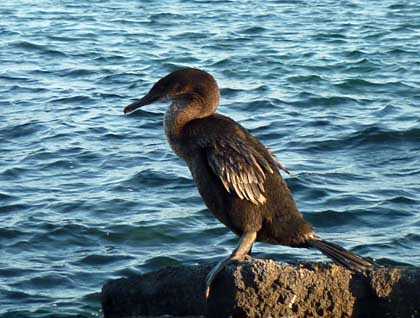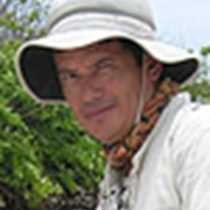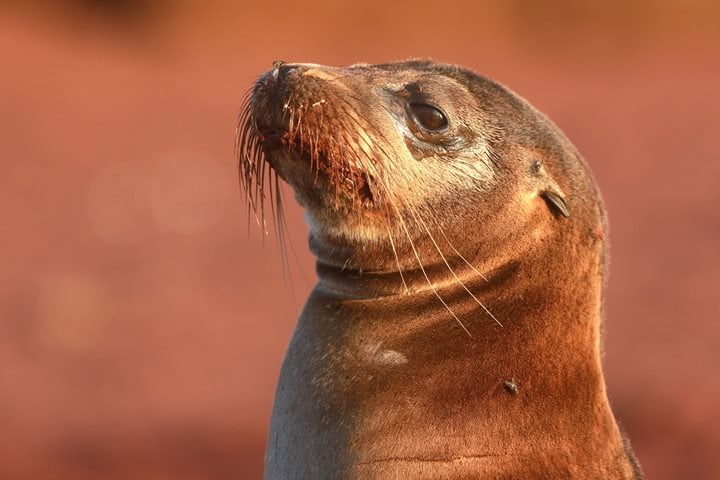Isabela Island is the largest island of the Galapagos with an area of 4,600 square kilometers, almost four times larger than Santa Cruz, which is the second largest of the archipelago. It was named after Queen Isabela of Spain but originally was named Albemarle after the Duke of Albemarle. Isabela strides the equator and was formed by the merger of 6 shield volcanoes, being the most active of the archipelago.
Continuing our expedition along the Western of the Galapagos, early in the morning we arrived to Urbina Bay which is situated at the foot of Alcedo Volcano. In 1954 the whole area was uplifted by up to ten meters in places being possible to observe evidence of marine life petrified on the rocks along that complete area. With a calm ocean and sunny day, after breakfast we headed on expedition landing crafts to the black landing beach observing some flightless cormorants and penguins in feeding frenzy. Walking inland, mockingbirds, finches and yellow warblers, fluttered among the green vegetation, as demonstrating their happiness due to the last rainfalls occurred few weeks ago, bringing them fresh water and food. Every single rock along the trail was covered with rests of fossilized barnacle, sea worms and some seashells which, like mute witnesses still remain on the same place as remains of that geological event occurred years ago. We arrived to the previous landing beach, which looked undamaged being possible to observe the high tide mark left by the ocean as the last memory of a place that changed forever. The sun was implacable and little by little temperature warmed up the environment but not our eagerness to discover this unique place. Of course our prize was to observe endemic land iguanas resting indifferently along the path and huge coral heads of more than five meters of diameter which looked eroded by time and rainfalls, showing us the real topology of the sea floor that was more than 10 meters under the surface of the sea. We finally arrived to the black beach, where our guests had chance to swim with green sea turtles and the two flightless birds of the archipelago: penguins and cormorants.
After visit Urbina bay, the National Geographic Islander sailed north to visit Tagus Cove, an anchorage long used by pirates, buccaneers and other early visitors and of course an historic place which still bears the inscriptions from visitors in the nineteenth century. We enjoyed the realms of the ocean, snorkeling along the vertical walls where colorful invertebrates, sea turtles and penguins were the delightful of our guests. Afterwards, we had the chance to visit the Darwin Lake observing the gigantic Wolf, Ecuador and Darwin volcanoes from of the top of the lava flow at the end of the trail.
With the last rays of sun we headed back to the National Geographic Islander, observing as the sun disappeared at the west, just behind Fernandina Island, bringing us the best memories of an incredible day with unique species that captivated us forever.







